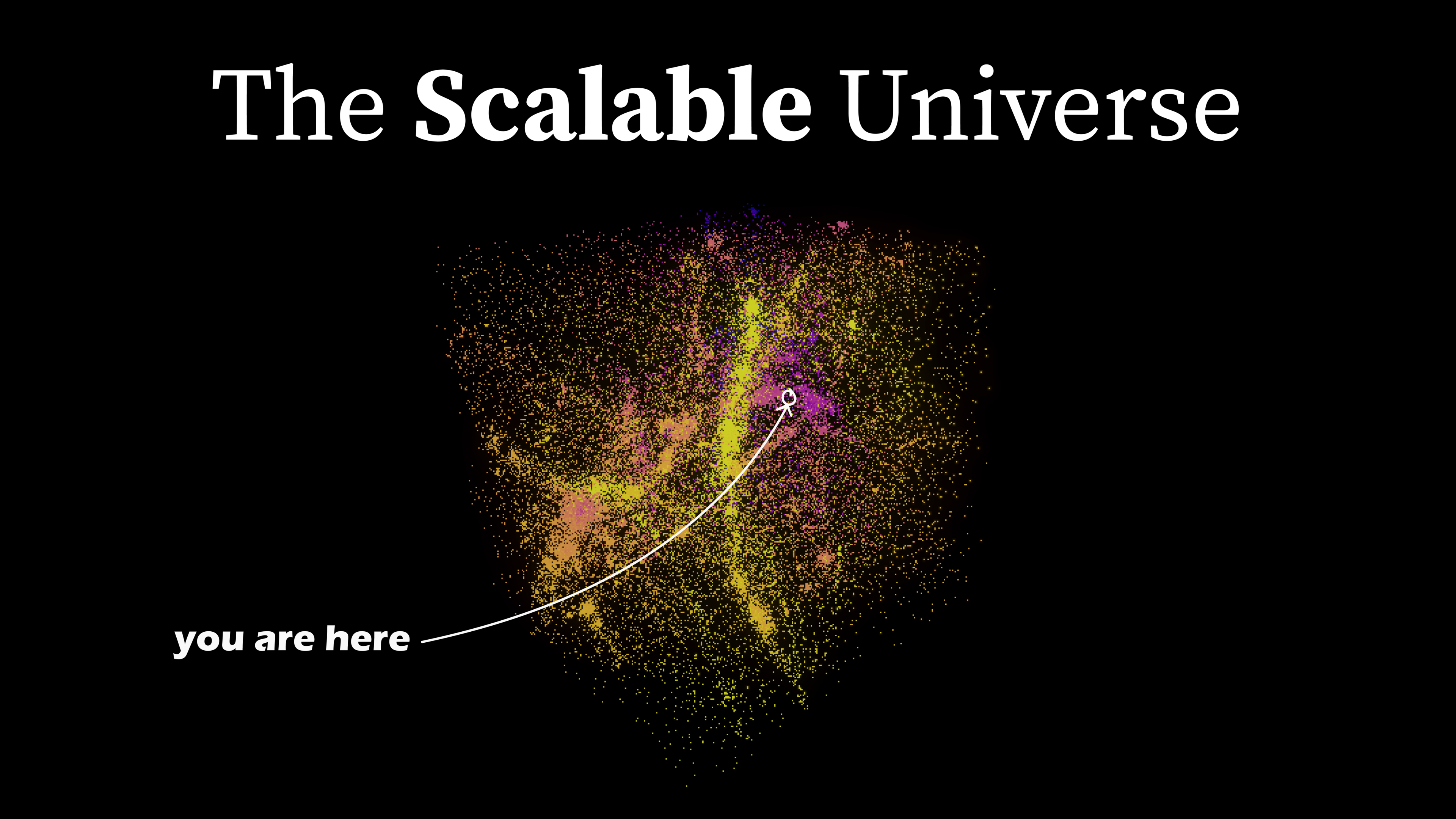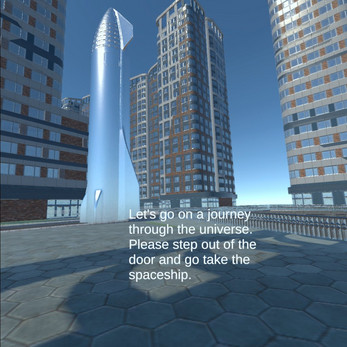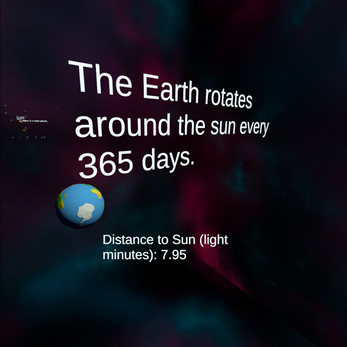
The Scalable Universe
A downloadable game
Welcome to the universe!
In this app, the Scalable Universe, you can go on a mission from planet Earth through the solar system and beyond! Observe in awe the contrast between different scales and sizes of planets and galaxies.
For the Metaverse Creators Hackathon, this app was created to study and portray contrast between different scales and orders of magnitude that you can experience in VR. From the comfort of your VR headset, learn about the planets and see how far you can travel.
Link to public Repo
https://github.com/HussainAther/spacevrcontrast.git
Technology stack
Languages: C#
Toolkits: Oculus XR Plugin, XR Interaction Toolkit, XR Plugin Management, Universal Render Pipeline
Software(s): Unity, Visual Studio, Blender
Assets
Classroom
https://sketchfab.com/3d-models/classroom-d4553cc2008242849214e4cbf8ad8551
Solar System (Model on the chalkboard)
https://sketchfab.com/3d-models/solar-system-360-da965e9c5db544eabc3acfd3a7c134e...
City
https://sketchfab.com/3d-models/modern-city-block-c80dba249d9547cbb48d00828d23cf...
Starship
https://sketchfab.com/3d-models/spacex-starship-a8a0b69f776841a1a465cd9fb3762fd2
Solar System
https://assetstore.unity.com/packages/3d/low-poly-solar-system-42713
Galaxy model from sketchfab
https://sketchfab.com/3d-models/need-some-space-d6521362b37b48e3a82bce4911409303
Narration transcript (generated by ChatGPT)
Classroom
The size of space is essentially infinite, as far as we know. The observable universe, which is the part of the universe that we can see and detect, is estimated to be about 93 billion light-years in diameter. However, this is just the observable universe, and it is believed that the entire universe extends much further beyond what we can observe.
Solar System
Welcome to the solar system, a vast and wondrous expanse of space that has fascinated humans for centuries. Our journey begins with the Sun, the heart of the solar system, a massive ball of gas that powers life on Earth and the rest of the planets.
Moving outward, we first come across the inner rocky planets, Mercury, Venus, Earth, and Mars. These small, dense worlds are marked by their cratered surfaces, violent volcanoes, and unique features like Earth's atmosphere and Mars' polar ice caps.
Next up are the gas giants, Jupiter, Saturn, Uranus, and Neptune. These massive worlds are defined by their swirling, multicolored clouds, powerful storms, and dazzling rings. They are home to dozens of moons, some of which may harbor signs of life.
Beyond the planets, we find a vast array of asteroids, comets, and other small bodies, many of which are remnants of the solar system's formation over four billion years ago.
As we contemplate the enormity and beauty of the solar system, we are reminded of our small place in the universe and the endless possibilities that lie beyond our tiny corner of space.
Milky Way
Welcome to the Milky Way, our home galaxy and a breathtaking spectacle of stars and cosmic wonders. This spiral galaxy is over 100,000 light-years wide, containing billions of stars, planets, and other celestial bodies.
At the center of the Milky Way lies a supermassive black hole, surrounded by a cluster of stars that orbit around it. Moving out from the center, we find the galaxy's spiral arms, each filled with stars, gas, and dust.
As we journey along the spiral arms, we discover diverse worlds and strange phenomena, from massive stars that explode in brilliant supernovas, to vast clouds of gas that give birth to new stars and planets.
The Milky Way is also home to numerous globular clusters, groups of stars tightly bound together by gravity. These clusters are some of the oldest objects in the galaxy, dating back billions of years.
As we marvel at the beauty and complexity of the Milky Way, we are reminded of the vastness of the universe and the many mysteries that still await discovery. Who knows what secrets lie hidden among the stars and planets of this magnificent galaxy?
Large Scale Structure
Welcome to the vast and mysterious expanse of the universe, a place of awe-inspiring wonder and unimaginable scale. The universe is composed of billions of galaxies, each containing billions of stars, planets, and other celestial objects.
As we move further out, we see clusters of galaxies and superclusters, immense structures that stretch across billions of light-years. These structures are connected by vast filaments of gas and dark matter, weaving a complex cosmic web that binds the universe together.
Beyond the structures and filaments of the universe, we find the cosmic microwave background radiation, the faint afterglow of the Big Bang that still pervades the universe. This radiation gives us a glimpse into the earliest moments of the universe, revealing the seeds of the galaxies and clusters that would eventually form.
As we contemplate the enormity and complexity of the universe, we are reminded of our small place in the grand scheme of things. Yet, we also marvel at the incredible beauty and diversity of the cosmos, and the endless possibilities that it holds.
Resources & Acknowledgements
Scientific visualization tools in blender
https://www.cv.nrao.edu/~bkent/blender/tutorials.html
Data immersion
https://www.astrobetter.com/blog/2013/03/25/immersing-yourself-in-your-data/
Pcx package for rendering point clouds
https://github.com/keijiro/Pcx
Public data used to create the large-scale structure scene
https://www.illustris-project.org/
Inspiration
https://devpost.com/software/cosmovr#updates
| Status | Released |
| Author | LightSpeedTurtle |
| Genre | Educational |
Install instructions
Once the files are downloaded from git, please build and run to quest 2 for the best experience (not tested on other headsets).




Leave a comment
Log in with itch.io to leave a comment.